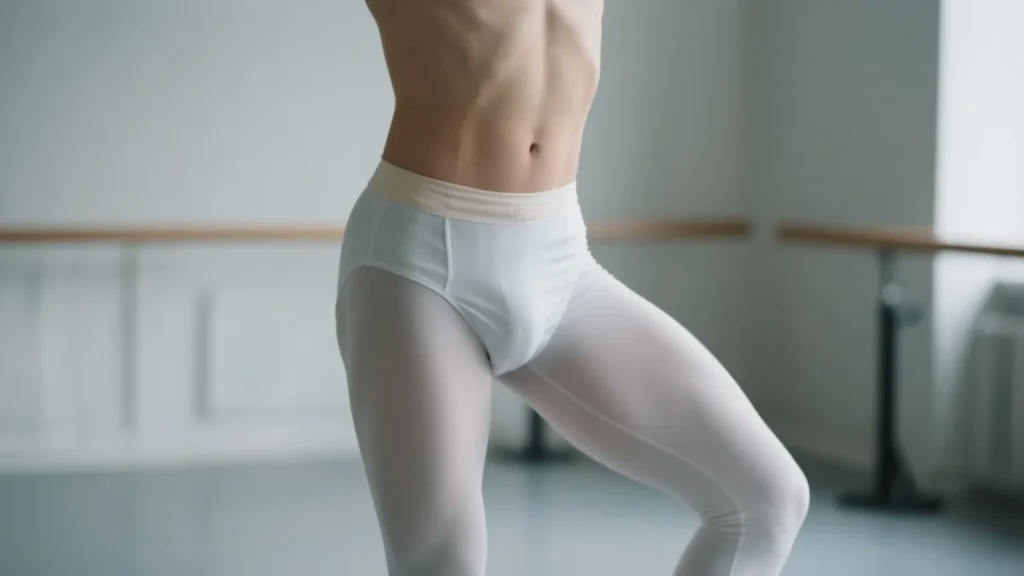What Is a Dance Belt and Do You Need One?

If you’ve ever asked “what is a dance belt”, here’s the clear, practical answer: a dance belt is a specialized undergarment—primarily for male dancers—designed to provide support, protection, and a smooth, discreet silhouette under tights or close-fitting costumes. Unlike everyday underwear or athletic supporters, a dance belt uses a shaped front pouch, firm elastic, and a thong or minimal back so lines don’t show on stage. It prevents distracting movement, reduces chafing, and keeps the costume line clean so technique—not anatomy—takes the spotlight.
What exactly is a dance belt?
A dance belt combines three ideas:
- Support: A contoured, compressive pouch lifts and holds the genitals close to the body to limit vertical movement during jumps, turns, and floor work.
- Discretion: The pouch and seams are shaped to minimize visible outlines. The back is usually thong-style specifically to avoid panty lines beneath tights.
- Stability: A wide waist elastic keeps the belt anchored at the anatomical waist or high hip (where tights typically sit), so nothing shifts mid-combination.
How it differs from other garments
- Vs. regular briefs/boxers: everyday underwear shifts and bunches under tights; seams show; support is insufficient for repeated jumps.
- Vs. athletic cup: a hard-shell cup protects from impact sports, but it’s bulky, visible, and restricts turnout and flexion. A dance belt is soft and flexible—made for range of motion and clean lines, not blunt-force protection.
Typical materials & build
- Performance knits such as nylon/spandex or poly/spandex with a molded or lightly padded pouch.
- Elastic waistbands about 3–5 cm wide for stability.
- Minimal seams; if present, they’re placed to avoid friction in turnout and splits.
Do you need one?
Short version: if you’re a male dancer training or performing in tights or other close-fit bottoms—yes. That includes ballet, contemporary, jazz, lyrical, acro, and figure skating/ice dance; many schools and companies require dance belts for classes, rehearsals, and performances. You might not need one for loose street styles (hip-hop in baggy pants), but the moment you’re in fitted leggings/tights, a dance belt is the standard.
Quick checklist
- You wear tights/leggings in class or onstage.
- You’re doing jumps, grand allegro, or acro where movement without support is uncomfortable.
- Your studio/company asks for a clean, uniform silhouette.
If you checked any of these, you need a dance belt.
Types of dance belts (and when to use each)
- Thong back (most common): Best for ballet and contemporary under tights—virtually no visible lines.
- Full-seat back: More coverage and initial comfort for new dancers; fine under thicker leggings or rehearsal shorts, but lines can show under classic tights.
- Seamless/minimal-seam pouches: Ideal for performances with bright lighting; fewer outlines.
- Molded vs. soft pouch: Molded shapes help consistency and modesty onstage; soft pouches feel cooler and break in quickly during training.
Sizing & fit: how to get it right
Measuring
- Measure at the height you wear your tights (usually high hip or anatomical waist).
- The dance belt should feel snug and secure, not painful. If you’re between sizes, most dancers size up for class comfort and true-to-size for performance.
What “good fit” feels like
- The waistband stays level and doesn’t roll.
- The pouch supports against the body without gaps.
- The thong sits centered, with mild tension but no cutting.
- You can complete a class—pliés, grands jetés, floor work—without adjusting every few minutes.
Approximate guidance (no table needed)
- Smaller waists (≈ 26–28 in / 66–71 cm): try S.
- 29–31 in / 74–79 cm: M.
- 32–34 in / 81–86 cm: L.
- 35–37 in / 89–94 cm: XL.
- Above that, look for extended sizes or higher-rise options that keep the waistband stable.
Remember: different brands vary. Prioritize secure support and smooth lines over the letter on the tag.
How to wear a dance belt (step-by-step)
- Put on the dance belt first. Align the pouch so everything is comfortably supported upward and inward.
- Center the thong. It should run straight and flat; slight body-lotion or anti-chafe balm can help during the break-in period.
- Add tights or leggings. Pull them over the dance belt and smooth any wrinkles.
- Move test. Do a few pliés, a passé balance, and small jumps. If anything shifts, try a firmer size or a more contoured pouch.
Common mistakes to avoid
- Wearing regular underwear under or over a dance belt—this adds seams and bulk.
- Choosing a full-seat under classic ballet tights (lines will show).
- Going too loose “for comfort.” Loose equals movement, and movement equals chafe and distraction.
Comfort, hygiene & care
- Break-in: first two classes may feel new; by class three or four, elastic settles.
- Chafing prevention: a thin layer of anti-chafe balm on contact points; keep seams centered; switch to thong-back for cleaner lines.
- Laundry: cold wash in a mesh bag with gentle detergent; air-dry only (heat destroys elastane).
- Rotation: keep 2–3 belts and rotate to extend life.
- Replacement cadence: when the waistband loosens or the pouch loses crisp support—often 6–12 months with regular training.
“what is a dance belt” FAQs
Do boys/teens need a dance belt?
Many schools recommend them once technique classes move to tights and center work. Start with a soft-pouch, full-seat for comfort, then graduate to thong-back as performance demands increase.
Is a dance belt the same as a jockstrap?
No. Jockstraps are made for impact sports and use a different pouch shape and elastic geometry. Dance belts are about clean lines and controlled movement.
Do I wear anything with it?
No underwear. Just the dance belt, then tights/leggings, then your costume or shorts if required.
Can I use a protective cup inside a dance belt?
Generally not; the bulk shows and restricts turnout. For acro or stunts with impact risk, discuss safe alternatives with your coach.
When you might not need one
If you dance exclusively in loose pants and never wear fitted tights or leggings, a dance belt may be optional. That said, many male dancers still prefer one for support during jumps. Try a class with and without—you’ll feel the difference immediately.
Related shopping & style resources
While a dance belt is a performance undergarment, many readers also look for everyday outfit belts to wear before/after class or at events. If that’s you (or you’re buying for a partner), browse our curated women’s collections:
- Women’s Casual Belts — everyday jeans and weekend looks
- Women’s Dress Belts — polished outfits and occasions
Bottom line
The simplest way to answer “what is a dance belt” is this: it’s the quiet piece of gear that lets male dancers move powerfully and look stage-ready without distraction. Choose a thong-back for classic tights, fit it snug at the high hip, and prioritize a smooth, supportive pouch. With the right belt, your lines look cleaner, your jumps feel better, and your focus stays on performance—not on adjusting your costume.
